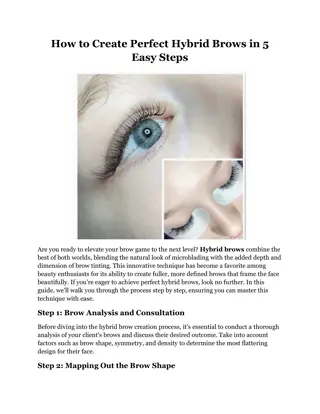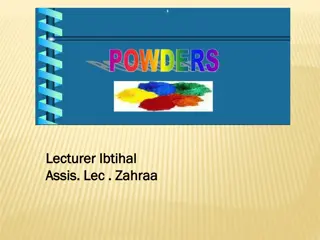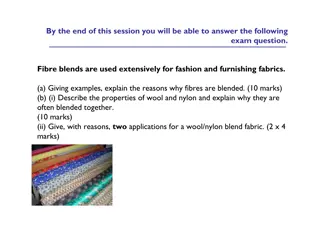
Types of Blending in Spinning Mills
Learn about the importance of blending raw materials in spinning mills to influence the end product and process. Explore different types of blending techniques such as Bale Mixing, Flock Blending, Lap Blending, Sliver Blending, and more for achieving desired characteristics and reducing costs.
Download Presentation

Please find below an Image/Link to download the presentation.
The content on the website is provided AS IS for your information and personal use only. It may not be sold, licensed, or shared on other websites without obtaining consent from the author. If you encounter any issues during the download, it is possible that the publisher has removed the file from their server.
You are allowed to download the files provided on this website for personal or commercial use, subject to the condition that they are used lawfully. All files are the property of their respective owners.
The content on the website is provided AS IS for your information and personal use only. It may not be sold, licensed, or shared on other websites without obtaining consent from the author.
E N D
Presentation Transcript
Blending Raw materials used in spinning mill are always inhomogeneous in their characteristics. In part, this is inevitable owing to the different cultivation conditions of natural fibres and different production conditions for synthetic fibres. It is done in order to influence the end product and the process. Blending is performed mainly in order to: a. Give the required characteristics to the end product, for example, blending of synthetic fibres with natural fibres produces the desired easy-care character. b. Compensate for variations in the characteristics of the raw materials. c. Hold down raw material cost d. Influence favorably the behavior of the raw material during processing e. Achieve effects by varying color, fibre characteristics and so on.
Types of blending Bale Mixing: before the blow room i. Flock blending: within the blow room ii. iii. Lap blending: using scutchers iv. Web blending: at ribbon lap machine or blending at drawframe Sliver blending: at drawframe, the sliver-lap machine, or at the comber v. vi. Fibre blending: at card or the OE spinning machine vii. Roving blending: at the ring spinning machine






















